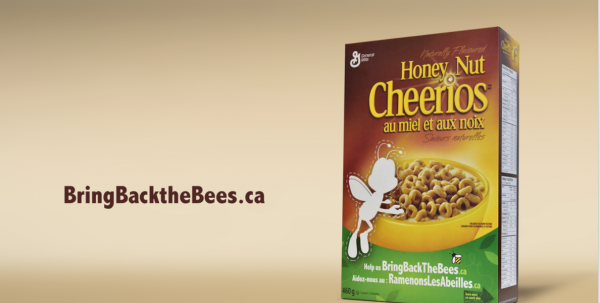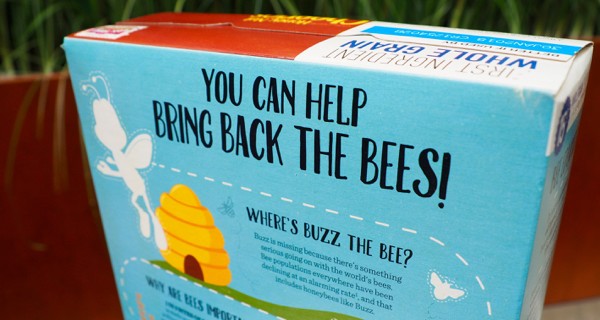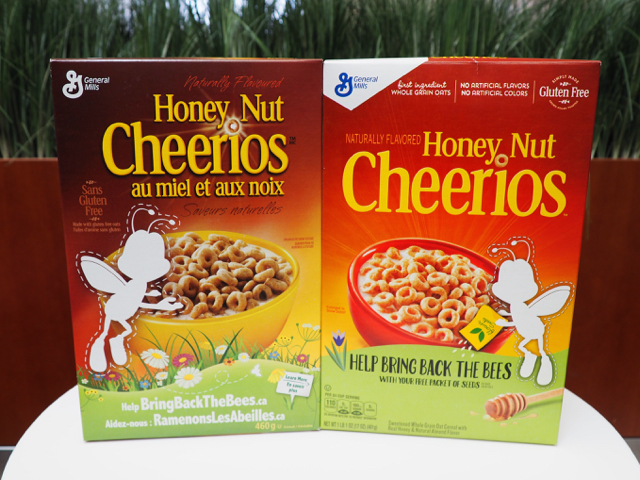In 2016, General Mills Canada and their marketing aAgency, Cossette, laid out an ambitious, purpose-driven business and marketing strategy that was equally self-preserving and altruistic in its approach.
It was all about bees. In 2014, beekeepers in Ontario reported a 58% loss in their bee population. In the following year, a 38% loss was observed in Ontario. And the overall in bee population across Canada had decreased 16%. The primary reason for the decline? The loss of wildflower habitats across the country.
Aside from the devastating effects such a loss would have on the environment, agriculture and economy, it would eventually mean the end to one of General Mills’ most popular brands, Honey Nut Cheerios.
General Mills and its agency recognized that the situation provided the perfect tenets for a much-needed purpose-driven strategy. Bee preservation was an important cause that had very real meaning to the world, and – an issue that both employees and consumers could rally behind. It was also utterly invaluable to the comapny’s product development and business.
That’s how the Bring Back The Bees campaign was born.

It began with a powerful purpose-driven brand awareness campaign to alert Canadians to the growing problem – Helping Is In Our Nature was accompanied by pervasive social media effort, #bringbackthebees, to spread word of the issue.
Even more impressive, however, was what General Mills did with their packaging. For the first time in advertising history, a marketer removed its brand icon and mascot from its packaging. General Mills replaced its bee character with a white silhouette symbolizing the significance of disappearing bees and Honey Nut Cheerio’s commitment to solving the problem.
Canadian consumers were encouraged to sign up online to receive a free pack of wildflowers, to plant wherever they wanted. The goal: to plant 35 million wildflower seeds, one for every person in Canada.

The campaign proved to be both provocative and effective: the 35 million target was met in the first week alone, and 115 million seeds were distributed by year’s end. Not only that, business sales increased 11.8%.
Last year, the purpose-driven strategy was reinvigorated in Canada with a traveling ‘pop-up store’ campaign that gave people a surprising look at the grocery store of the future. The stunt dramatized the irreversible effect diminishing bee populations would have on our everyday lives.
After the second year of the campaign, more than 400 million wildflower seeds had been distributed across Canada. The campaign resonated with consumers so much, and respond with such conviction, that General Mills decided to adapt the purpose-driven strategy for their US market.
And that’s where the scalability of the campaign came into question.
In its first year, the US campaign proved to be exponentially larger, exceeding General Mills’ forecast of wildflower seed distribution by ten times. It mailed out over 1.5 billion seeds to Americans.
However, the success of the initiative drew a lot of media attention and criticism from consumer blog Lifehacker, which accused General Mills of including seeds for wildflowers considered invasive in some parts of the US.
While General Mills and its horticulturalist partner Vesseys disputed the claims, the scale of the media backlash in the US was huge. It called into question the brand’s enthusiastic adaptation of Canada’s campaign.
To their credit, General Mills has remained resolute with its strategic purpose: it has promised to plant 3,300 acres of wildflower habitat on its US oat farms, as well as other initiatives in its own backyards.

”The success of this program shows that both Canadians and Americans are willing to take steps to help the bees.
Susanne Prucha, director of Cheerios in the U.S

